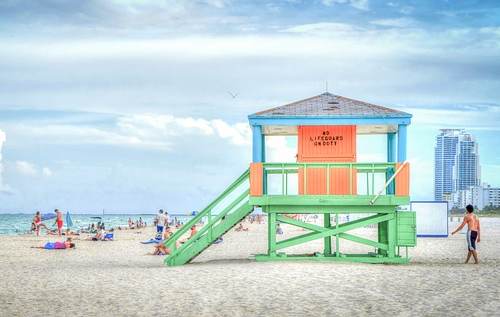Reinsurance and ILS markets remain optimistic on the potential for relatively significant price increases at the next Florida renewals in June, despite the fact some insurers are increasing their FHCF participation rates.
 Heritage Insurance Holdings, Inc. doubled its Florida Hurricane Catastrophe Fund (FHCF) participation to 90% it has emerged and as our sister publication Reinsurance News reported.
Heritage Insurance Holdings, Inc. doubled its Florida Hurricane Catastrophe Fund (FHCF) participation to 90% it has emerged and as our sister publication Reinsurance News reported.
Chairman and Chief Executive Officer (CEO) of Heritage Bruce Lucas said that this is a strategy he expects others to follow in advance of the reinsurance renewals, as insurers seek to take advantage of coverage from the FHCF in the hope it turns out to be cheaper that traditional and ILS sources of protection.
It’s almost an arbitrage play, of switching between FHCF reinsurance cover and private markets in order to benefit from the most attractive pricing and even to try to influence pricing.
Insurers believe that by upsizing their FHCF participation it will take demand away from traditional and collateralized reinsurance markets, which some suggest could help to make private market pricing keener at the renewal.
Of course, this is at a time when private reinsurance markets are hoping for some significant price increases, on the back of the major hurricane losses from 2017 and 2018, as well as the ongoing loss creep issues and costs flowing through from assignment of benefits (AOB) cases.
Lucas said during his insurers recent earnings call that, “In my opinion, I do believe you are going to see most of the Florida carriers move to a minimum of 75% if not 90% across the board, due to uncertainties around reinsurance pricing.”
He said this could remove as much as $3 billion of catastrophe capacity demand from the Florida renewals, a reasonable sized chunk of reinsurance.
“We think that will have a very, very positive impact on reinsurance pricing as we move throughout this program,” Lucas said.
With its move to the FHCF Heritage is trying to secure more of the cheapest reinsurance pricing available, from the state backed catastrophe fund.
“It serves as a pretty big hedge on year-over-year price increases for the reinsurance tower,” Lucas said, adding, “Our position prior was that you should use the cat fund as a hedge. And so, if reinsurance rates are incredibly low, and you can bind private layers at or below the cat fund cost, you should go to 45%, and then use the cat fund at 90% in the event that there is a hardening event in the reinsurance market that could potentially move rates higher.”
The FHCF does change its rates in response to losses and market dynamics, but it tends to be at a lesser pace than traditional reinsurance markets or ILS funds will look for.
As a result it presents a hedging opportunity for insurers in Florida looking to keep their renewal rates down.
The question is whether reinsurers and ILS markets will look to compete with the FHCF.
The feeling is they won’t and that underwriting shops are so determined to secure rate rises, after their significant losses of recent years, that they will stick to their guns and push for the best improvements they can get.
But the insurers’ strategy of using the FHCF as a pricing hedge could influence just how hard some push for rate increases at the renewal.
Markets remain optimistic that rate increases will still be forthcoming, as the demand and supply of capacity will still be driven by their willingness to underwrite certain layers of risk in Florida.
But the higher FHCF participation is a return to a less public risk marketplace, with more risk flowing into the catastrophe fund than before, reversing the move to privatise this.
Of course, the Florida Hurricane Catastrophe Fund (FHCF) may need to buy more reinsurance itself as a result of taking on more risk from insurers, so it could even itself out if the fund continues on its mission to privatise as much risk as it can.
Removing the risk from taxpayers should be key, hence shifting Florida property catastrophe risk into reinsurance and ILS markets is still seen as the ultimate goal for many.
Use of the FHCF will be another interesting feature of the June renewals and could influence appetite, demand and pricing for the private market.
Whether any markets will seek to compete with its pricing remains to be seen, but so far feedback from traditional and ILS sources suggests they will stick to their guns and push for the best rate they can achieve.
 View all of our Artemis Live video interviews and subscribe to our podcast.
View all of our Artemis Live video interviews and subscribe to our podcast.
All of our Artemis Live insurance-linked securities (ILS), catastrophe bonds and reinsurance video content and video interviews can be accessed online.
Our Artemis Live podcast can be subscribed to using the typical podcast services providers, including Apple, Google, Spotify and more.































